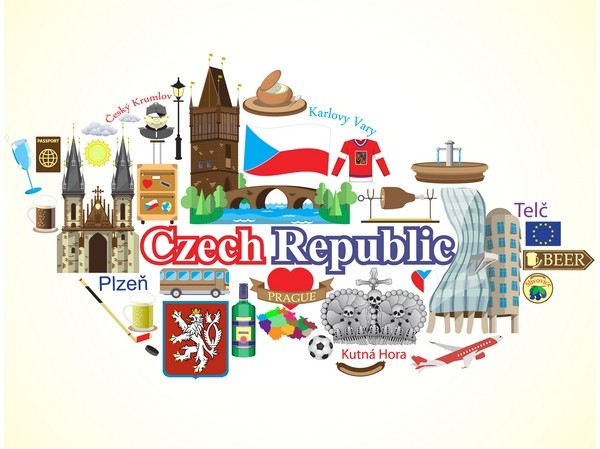Czech Translation and Interpreting
Since 1993, we have been here to translate for you between Czech and other world and European languages. LEXIKA provides high quality translations promptly and at a reasonable price. You can contact us with any type of request for a text to be translated from or to the Czech language.
We provide reliable certified as well as regular translations in a wide range of specializations such as economics, technology, law or medicine. Our satisfied customers particularly appreciate the high quality, speed, and good price of our translation and interpretation services.

We translate large numbers of Czech texts
Each Czech translation project is carefully analysed and processed in accordance with our client’s requirements, the best proof of which is our clients’ references. We respect the agreed on delivery deadlines and strive to provide high quality translation and interpreting services.
Over the course of more than 20 years of market presence, many regional and global companies have decided to take advantage of our services and we have provided them with tens of thousands of translation projects.
The most common specializations include the engineering industry, automotive industry, IT, finance and employment documentation. To deliver reliable translations in the field of medicine, chemistry or pharmaceutics poses no problem for us, either.
The most routinely translated texts from the above mentioned fields include business and employment contracts, public procurement and tender documentation, manuals or various technical specifications. The consulting services relating to your translation projects are free.
How do we do it?
Czech specialist translators
Our Czech translators work in more than 120 specialisations and we carefully select the most suitable linguist depending on the linguistic and terminological aspects of the original text. You can always be sure that with LEXIKA, your translation is being worked on by an expert in the given field.
Quality tested to international standards
Since 2009, the quality management system of LEXIKA has been annually audited by TÜV SÜD – a renowned audit company which verifies whether we fulfil the strict requirements of ISO 9001. Compliance with the standard guarantees systematic processing of all requirements as well as a high quality of service and delivered projects.
We recommend you have all of your text translated in compliance with the requirements of the ISO 17100. Texts translated in such a way guarantee the implementation of demanding requirements placed on our translators, reviewers, proofreaders, and the entire translation process.
Translators and modern technologies
New technologies have also had a considerable impact on the translation industry. At our company, all texts are translated by human translators who work with the latest translation tools. These tools help them use consistent terminology and thus make the translation process more effective and meet higher quality standards. To a certain extent, they even make it possible to reduce your translation costs.
Quality assurance
Each translation is reviewed by an experienced expert whose work is aided by modern software tools. The quality assurance process verifies the use of terminology defined by the client and the correct use of translation procedures including all revisions, spelling corrections, proofreading and compliance with any specific client requirements. We also pay a considerable amount of attention to the graphic layout of the translated text.
Interested in using our services?
Leave us a message with your requirements and we’ll get back to you
Czech Republic or Czechia?
Czech is one of the official languages of the EU. It is spoken by approximately 13 million speakers and can be used even in communication with Slovak authorities. When it comes to the name of the country, the Czech Republic is a clear choice. However, what about the shortened version of 'Czechia'? The name has not quite caught on. There are several reasons for it including the possibility of the country being mistaken for Chechnya.
Country names do sometimes pose problems. An example is the so called Hyphen War (literary the Dash War). It was a short-lived conflict over what to call Czecho-Slovakia after the fall of the Communist government. The history of the Czech Republic is well-known. Now let us take a look at the history of the Czech language.

How did Czech arise?
The first written notes, short Czech texts and various short records date back to the Old Czech period. The spelling was not stable yet, hence the texts employed to a certain extent random Latin characters, which caused ambiguity (for instance the letter c stood for k, c or č).
Over the course of the 14th century, the Czech language made progress and it was not only used in official but also literary texts for the first time. This is also the period when the digraphs (spřežky in Czech) got simplified. Digraphs are pairs or triplets of characters used together to represent a single phoneme (a single sound). Similarly as S and H are pronounced as a single sound in English or C and H as a single sound in the present-day Czech language, in the Old Czech, there were rz (ř), zz (s), and others.
An important person in the history of the Czech language in the period of the Czech humanism was Jan Hus, who helped spread Czech among the people. After the 15th century onwards, the so called Brethren spelling named after the Unity of the Brethren (a church that was publishing many written documents at that time) has become the prevalent spelling in the Czech language. An important milestone was the translation of the Bible into the Czech language. Other changes and developments were brought about by Jan Amos Komenský, Josef Dobrovský, Pavol Jozef Šafárik and Jan Gebauer, who was instrumental in the preparation of the first handbook of Czech spelling Pravidla českého pravopisu.

